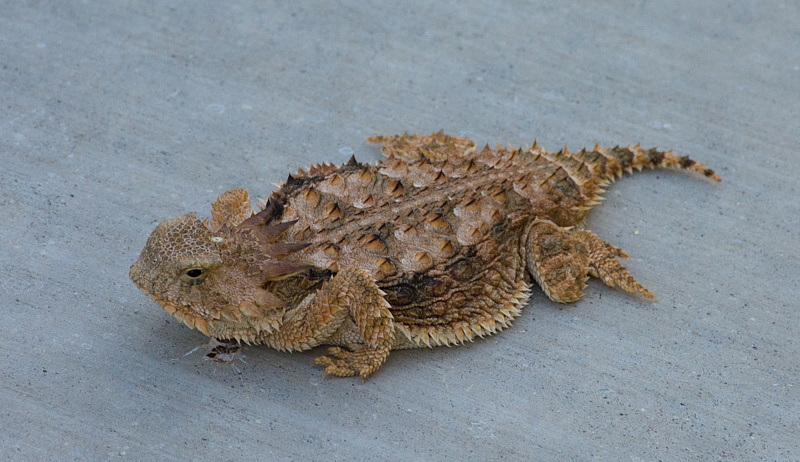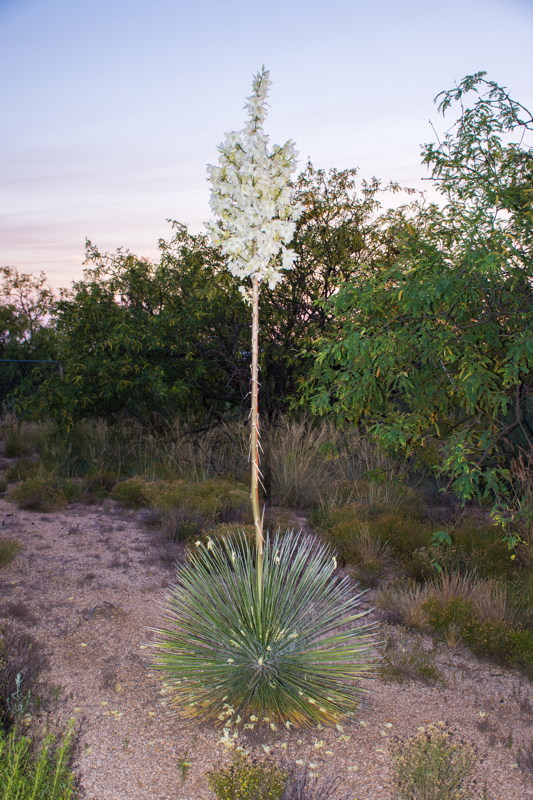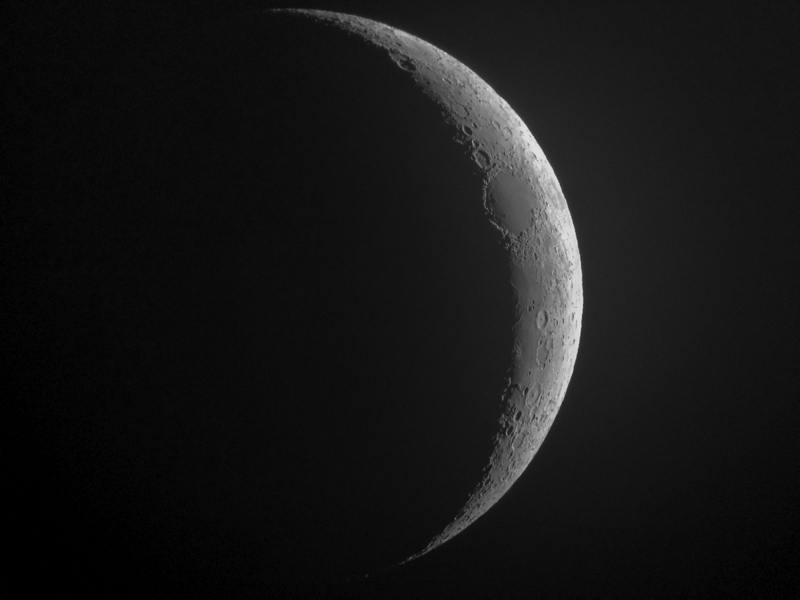Critter, Jupiter/Venus/Moon, Good ISS
Posted: 20 June 2015
Smokey skies from the Kearny wildfire 30 miles north of Cassiopeia Observatory continued on Friday, 19 June 2015. On Friday, the fire was at 1428 acres with 40% containment. And some clouds appeared during the day.
On my way to the observatory saw this Great Horned Lizard:

|
Open: Friday, 19 June 2015, 1848 MST Temperature: 104°F |
Session: 839 Conditions: Partly cloudy, smokey sky |
1855 MST: Viewed Venus, then Jupiter, then the crescent Moon at 83X. All were viewed through thin clouds. I thin updated the ISS TLE in the AutoStar for the night's good pass and synced the observatory clock to WWV. 1908 MST: Venus was visible to the naked eye. Viewed Venus and the Moon using 12x70 binoculars. They were not in the same 4.6° field-of-view (FOV). Jupiter was not yet visible. 1915 MST: took this iPhone 5s photo of the western sky 23 minutes before sunset:

1924 MST: some breezes were now occurring. 1925 MST: Jupiter faintly visible to the naked eye. It was not in the same 12x70 FOV with either the Moon or Venus.
There was a nice blooming yucca plant near the observatory:

1938 MST: sunset. This is how the sky appeared at sunset, taken with the D7200 DSLR:

The crescent Moon is visible at the upper left.
This D7200 DSLR, f/5, 1/30sec, ISO 400, FL 50mm, photo shows Jupiter, Venus, and the Moon at 1953 MST:

Mouseover or tap on image for labels
2004 MST: took this D7200 DSLR, f/5, 1/20sec, ISO 400, FL 22mm, showing the planets and the crescent Moon:

Mouseover or tap on image for labels
This is the crescent Moon seen through the 8" LX200-ACF telescope, 77X, taken with a handheld iPhone 5s:

I then did some lunar observing, 83X. Even through the thin clouds the view was pretty nice.
This is the western sky at 2012 MST, taken with the iPhone 5s:

The planets and crescent phase of the Moon are visible in the iPhone photo.
2019 MST: viewed Venus, 83X. Then viewed Jupiter, 83X. Three moons were visible. Next, took a quick look at Saturn, 83X. Four moons were visible.
2037 MST: Terminated the first two Kissing Bugs seen this night in the observatory. A third one was too high on the dome to reach.
2042 MST: the western sky, D7200 DSLR, f/5.6, 30 seconds, ISO 1600, FL 18mm:

Mouseover or tap on image for labels
2050 MST: Kissing Bug #3 terminated. Then began preparing for the night's pass of the International Space Station (ISS). Mounted the D7200 at prime focus + 2X PowerMate and did a focus test image on the star Spica using a Bahtinov Mask. Also checked the finderscope alignment; OK. I was then ready for the ISS pass. Clouds in the western sky would be a slight impact on image quality. 2102-2116 MST: Kissing Bugs #4, #5, and #6 were terminated.
When the ISS pass began, initial pointing and tracking was fairly good. Mid-pass tracking was not quite as good. I did a HD video recording, 1.3X crop factor, 60 frames per second, 1/1000sec, ISO 4000. Here are several frames from the video showing the changing perspective of the ISS during the pass:

These are pretty good images of the International Space Station given the thin clouds I was imaging through.
I decided to close up due to the clouds. There was no way I would be able to image asteroid Icarus (Mag +13.9) or do my planned Deep Sky Object imaging due to the clouds and smokey sky.
|
Close: Friday, 19 June 2015, 2144 MST Temperature: 81°F |
|
Comments are welcome using Email. If you are on Twitter you can use the button below to tweet this report to your followers. Thanks.
Cassiopeia Observatory Home Page
Copyright ©2015 Michael L. Weasner / mweasner@me.com
URL = http://www.weasner.com/co/Reports/2015/06/20/index.html
